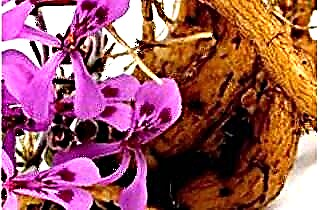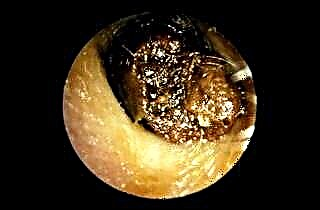Sinusitis is an acute inflammation that rarely goes away without fever. Usually it rises to an average of 38 ° C, but exceptions happen. In some cases, the disease can occur without elevated body temperature.
Risk zone
 Sinusitis without fever is a disease that often occurs in a certain category of people. First of all, elderly people who have had rhinitis become its victims. It is difficult to diagnose their complication in the form of sinusitis, since many other diseases usually appear by this age. Lack of air, dizziness, weakness can be symptoms of other diseases, so sinusitis can develop unnoticed. However, when a runny nose does not go away for a long time, an unpleasant odor is felt from the nose, headaches become more frequent - it's time to make an appointment with an otolaryngologist.
Sinusitis without fever is a disease that often occurs in a certain category of people. First of all, elderly people who have had rhinitis become its victims. It is difficult to diagnose their complication in the form of sinusitis, since many other diseases usually appear by this age. Lack of air, dizziness, weakness can be symptoms of other diseases, so sinusitis can develop unnoticed. However, when a runny nose does not go away for a long time, an unpleasant odor is felt from the nose, headaches become more frequent - it's time to make an appointment with an otolaryngologist.
The disease without fever appears in people with low immunity. Due to the weakened protective function, the infection easily settles in the maxillary sinuses. If inflammation is not diagnosed in time and treatment is not started, the disease will develop very quickly, the infection will spread throughout the body, which can have disastrous consequences.
Young children are also at risk. They have sinusitis, which proceeds without fever, may occur against the background of a sluggish infection. Hyperemia - blood vessels overflowing with blood can contribute to the development of inflammation.
In addition, at this age, the baby cannot tell about his condition, so you need to carefully monitor his condition and behavior. Refusal to breast, sniffling, lethargy, insomnia or drowsiness, increased moodiness - all these are reasons for a visit to the doctor.
When the disease occurs
We figured out whether sinusitis without fever can occur. If the inflammation is not acute, then the fever usually does not appear. Now let's clarify exactly when the disease develops.
First of all, when the course of the disease is chronic, and the inflammation in the focus is sluggish. This situation arises against the background of an untreated primary disease, when a small focus of infection remains or re-inflames in the sinuses. It does not extend further, but it does not go away either. At the same time, symptoms typical of sinusitis - nasal congestion, discharge, pain - may not appear. The disease may be indicated by a cough that occurs at night. At the same time, no changes in the lungs are observed. It appears due to the fact that in a horizontal position mucus from the nose flows down to the back wall of the nasopharynx, reflexively causing a cough. By the morning, dry yellow-green or yellow crusts form in the nose.
 When the chronic process is sluggish, the temperature does not rise or is kept at subfebrile values (37.1 ° C-38 ° C) for a long time with practically no changes. Sometimes it can rise slightly in the evening, subsiding in the morning.
When the chronic process is sluggish, the temperature does not rise or is kept at subfebrile values (37.1 ° C-38 ° C) for a long time with practically no changes. Sometimes it can rise slightly in the evening, subsiding in the morning.
This situation arises because the weakened body cannot recognize the infection and does not fight it. Therefore, it is impossible to cope with the disease on your own at home, you must definitely consult a doctor. With an exacerbation of the disease, all the symptoms typical of sinusitis appear.
Fever may be absent in the case of allergic sinusitis, until a bacterial infection joins it. If pathogenic bacteria did not get into the inflamed sinuses, the body temperature still remains within the normal range. Then the treatment begins with eliminating the effects of the allergen and cleaning the nose.
Symptoms of the disease
The main signs of sinusitis in the absence of an elevated temperature are the same as in the normal course of the disease:
- Symptoms that indicate general intoxication of the body. They usually include a decrease in well-being, activity, performance, lethargy. The older people are, the more they tend to attribute these conditions to age and meteosensitivity.
- Runny nose, swelling of the nasal mucosa and, as a result, difficulty breathing through the nose, congestion. Sometimes there may not be an obvious runny nose, but from time to time, crusts form in the nose.
- Intense headaches, which appear in full capacity with sharp turns of the head, bending down. Dizziness is sometimes observed. At the same time, it is extremely difficult to remove them.
- In the area of the sinuses, swelling and soreness occurs, but if the process is sluggish, it may not be felt.
 Please note that when treating common sinusitis with fever while taking antibiotics, the fever goes away, but the disease itself still remains. One can speak of complete recovery only when the inflammation does not appear on the X-rays and the blood test becomes good. The normalization of the temperature speaks only of a decrease in inflammation, but if treatment is stopped at this stage, it can resume with renewed vigor.
Please note that when treating common sinusitis with fever while taking antibiotics, the fever goes away, but the disease itself still remains. One can speak of complete recovery only when the inflammation does not appear on the X-rays and the blood test becomes good. The normalization of the temperature speaks only of a decrease in inflammation, but if treatment is stopped at this stage, it can resume with renewed vigor.
Remember that sinusitis in any form is an infectious disease that, without proper treatment, leads to serious complications. Therefore, if you have even a minor runny nose that does not go away within two weeks, you should consult an otolaryngologist.
Treatment
Treatment of sinusitis of any form involves both a conservative and an unconventional approach.
Traditional methods
The first involves drug treatment, especially in the acute form of the course of the disease. In this case, pain relievers and antipyretics are prescribed, while bed rest is prescribed. Local antibiotics, which have an antimicrobial effect, are becoming the main agents for treatment. Only a doctor can select them, set the course duration and dosage. With a properly selected drug, the picture of the course of the disease improves already on the fourth day of taking them.
For the chronic form, treatment can take several months. However, there is no guarantee of complete recovery. Antibiotics may also be prescribed for treatment, but they should not be discarded at the first sign of improvement. If you go through the course from start to finish, the risk of relapse drops sharply.
 Today, sinusitis treatment is carried out using new technologies, for example, using a laser. Usually a course is prescribed for two to three weeks, but with a mild course of the disease, several procedures can be limited. The laser treats the sinuses with a high temperature, as a result of which the lumen of the pathways increases, the patient can breathe through the nose again. The procedure is absolutely painless, does not provoke allergies, and does not leave scars.
Today, sinusitis treatment is carried out using new technologies, for example, using a laser. Usually a course is prescribed for two to three weeks, but with a mild course of the disease, several procedures can be limited. The laser treats the sinuses with a high temperature, as a result of which the lumen of the pathways increases, the patient can breathe through the nose again. The procedure is absolutely painless, does not provoke allergies, and does not leave scars.
When nasal discharge is profuse, rinsing and vasoconstrictor drugs are prescribed. If none of the above methods gave the expected result, they resort to the surgical method - puncture of the inflamed sinuses.
Folk recipes
Immediately I would like to draw your attention to the fact that sinusitis cannot be cured with folk remedies alone. Yes, they help relieve symptoms, but they do not completely remove the inflammation and do not eliminate the focus of infection. At any time after the end of treatment, it can flare up again and develop into a chronic form.
Therefore, if you decide to use traditional methods, contact your doctor for advice. He will select the best remedies to complement your medication based on the nature of your illness.
Remember also that many of the ingredients that traditional medicine recommends can cause allergies, which will only increase the swelling of the sinuses. Therefore, do not forget to carry out preliminary tests before using any product.
Among the popular folk recipes, it is worth noting the following:
- Decoction of bay leaves. Some people recommend to bury it in the nose, but it is more effective to use it as compresses. Soak gauze or a piece of soft cloth in warm broth and apply to the bridge of the nose. Many doctors believe that the relief is brought not so much by the bay leaf itself as by the warmth. And it is recommended not to overdo it, since it is dangerous to warm up purulent sinusitis.
 Ointment for sinusitis. A mixture of milk, onion juice, vegetable oil, honey, alcohol and grated laundry soap is heated in a water bath. Stir as the mixture heats up to make it smooth. Then a cotton swab or tampon is dipped into it and they lubricate the nose from the inside. Since the mixture contains honey, it is recommended to test it first for an allergic reaction.
Ointment for sinusitis. A mixture of milk, onion juice, vegetable oil, honey, alcohol and grated laundry soap is heated in a water bath. Stir as the mixture heats up to make it smooth. Then a cotton swab or tampon is dipped into it and they lubricate the nose from the inside. Since the mixture contains honey, it is recommended to test it first for an allergic reaction.- Cyclamen juice. This is also a high allergen, therefore, before use, it is necessary to check the reaction of the body. The procedure for use is also unpleasant. The nose is buried with juice, after which the active secretion of mucus and sneezing begins. Many instead of cyclamen juice prefer to use kombucha, including for inhalation.
- Horseradish with lemon. Grated horseradish root is mixed with lemon juice and the resulting mixture is taken orally in a teaspoon in the morning on an empty stomach. This remedy is not specifically aimed at treating sinusitis, but will raise the protective functions of the body and help it fight the infection that provokes the disease.
Among folk remedies, instillation of the nasal passages with aloe juice, rinsing the nose with iodine solution, inhalation with a spoonful of apple cider vinegar are also popular. But once again I want to repeat that all these remedies are good only in combination with traditional drug treatment.
Prophylaxis
Sinusitis is terrible in its consequences, especially - the danger of developing meningitis (inflammation of the cerebral cortex). Therefore, it is worthwhile to monitor your health, to be treated in time at the first signs of the disease, and best of all - to prevent the disease with preventive measures.
You need:
- avoid long-term stay in rooms with dry air, often humidify it;
- maintain immunity with proper nutrition, additionally consume vitamins;
- avoid hypothermia, keep feet and hands warm, wear a hat in cold weather;
 regularly check the condition of the teeth at the dentist, who will stop caries and other inflammatory processes leading to sinusitis in time;
regularly check the condition of the teeth at the dentist, who will stop caries and other inflammatory processes leading to sinusitis in time;- on time and to the end to treat any colds, especially a runny nose, no matter how harmless it may be;
- blowing your nose, you must close the opposite nostril so that mucus does not leak into the sinus;
- instilling drops into the nose, you need to move your head slightly back and towards the nostril, which you are going to drip, so that the solution gets into the nasal passage, and not the nasopharynx;
- timely correct adenoids in children, a deviated nasal septum, or, at least, be constantly monitored by a doctor.
Use these preventive methods, take care of yourself and at the first signs of the disease, contact your doctor for advice and the appointment of competent treatment. Treat the disease to the end to exclude relapses. Only under such conditions will it be possible to preserve your health.

 Ointment for sinusitis. A mixture of milk, onion juice, vegetable oil, honey, alcohol and grated laundry soap is heated in a water bath. Stir as the mixture heats up to make it smooth. Then a cotton swab or tampon is dipped into it and they lubricate the nose from the inside. Since the mixture contains honey, it is recommended to test it first for an allergic reaction.
Ointment for sinusitis. A mixture of milk, onion juice, vegetable oil, honey, alcohol and grated laundry soap is heated in a water bath. Stir as the mixture heats up to make it smooth. Then a cotton swab or tampon is dipped into it and they lubricate the nose from the inside. Since the mixture contains honey, it is recommended to test it first for an allergic reaction. regularly check the condition of the teeth at the dentist, who will stop caries and other inflammatory processes leading to sinusitis in time;
regularly check the condition of the teeth at the dentist, who will stop caries and other inflammatory processes leading to sinusitis in time;

